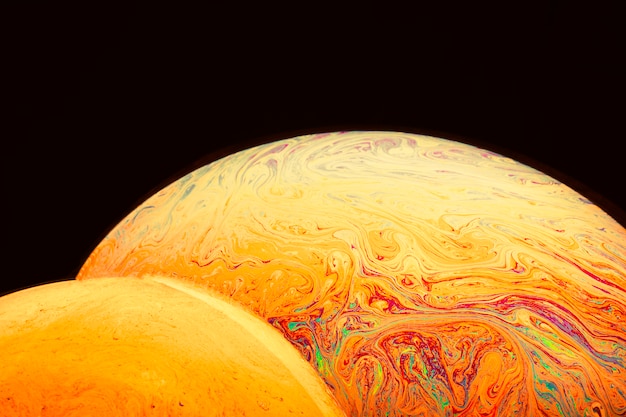

Venus is the second planet from the sun and the hottest planet in our solar system.
It is often referred to as Earth’s sister planet due to its similar size and mass.
Venus rotates in the opposite direction compared to most other planets, making it unique.
The length of a day on Venus is longer than its year, with a day lasting 243 Earth days.
Venus has a thick atmosphere composed primarily of carbon dioxide, creating a runaway greenhouse effect.
The atmospheric pressure on Venus is approximately 92 times greater than Earth’s, similar to being 900 meters underwater.
Venus has no moons or rings.
Despite being the closest planet to Earth, Venus is often overshadowed by the popularity of Mars.
Venus experiences an atmospheric phenomenon called super-rotation, where the clouds move much faster than the planet’s rotation.
The surface of Venus is covered in volcanoes and volcanic features, suggesting a history of active volcanism.
Venus is named after the Roman goddess of love and beauty.
The extreme temperatures on Venus can exceed 900 degrees Fahrenheit (475 degrees Celsius), hot enough to melt lead.
Venus has the densest atmosphere of all the terrestrial planets in our solar system.
The first spacecraft to successfully land on another planet was Venera 7, which landed on Venus in 1970.
Venus is the only planet in our solar system named after a female figure.
Since Venus is closer to the sun, it appears brighter than any other planet in our night sky.
Venus is often referred to as the Morning Star and the Evening Star due to its visibility before sunrise or after sunset.
The surface of Venus is mostly rocky, with vast plains, highlands, and impact craters.
Venus has a retrograde rotation, meaning it spins on its axis from east to west, opposite to most other planets.
Venus has been observed to have a thick layer of clouds that reflect more than two-thirds of the sunlight back into space.
Venus’s thick atmosphere produces a significant greenhouse effect, trapping heat and raising the temperatures.
Venus has been explored by multiple missions, including the Soviet Union’s Venera series and the European Space Agency’s Venus Express.
The first color photographs of another planet were taken by the Venera 13 spacecraft on Venus in 1982.
Venus has no substantial magnetic field, which impacts its interaction with the solar wind and protection from radiation.
Venus was once believed to be a tropical paradise due to its proximity to the sun, but it turned out to be a harsh and inhospitable environment.
Venus has a relatively young surface compared to other planets, with fewer impact craters due to volcanic activity and natural resurfacing.
The average temperature on Venus is hotter than the surface of Mercury, even though Mercury is significantly closer to the sun.
The first successful radar mapping of Venus’s surface was done by the Magellan spacecraft in the early 1990s.
Venus has been a subject of fascination and inspiration for countless artists, poets, and writers throughout history.
The Soviet Union’s Venera 9 probe captured the first photographs from the surface of Venus in 1975.
Venus has a rare astronomical event called a transit of Venus, where it passes directly between Earth and the sun.
The acidity levels in Venus’s clouds are so high that they could corrode metal.
Venus has been extensively studied to understand the impacts of the greenhouse effect on a planetary scale.
The surface of Venus is relatively flat, with no significant mountainous or tectonic features like on Earth.
Venus’s thick atmosphere prevents us from seeing its surface with visible light, requiring alternative methods like radar to map the surface.
Venus has been visited by more spacecraft than any other planet, with over 40 missions exploring the planet and its atmosphere.
Observations from spacecraft suggest that Venus may have had oceans of liquid water early in its history before it evaporated.
The atmospheric composition of Venus includes traces of sulfuric acid and sulfur dioxide.
Venus is often referred to as Earth’s evil twin due to its similar size but drastically different conditions.
There are ongoing scientific discussions about the potential habitability of Venus’s upper atmosphere, where conditions might be more moderate.
Venus appears as a bright, star-like object in the sky, leading to many misidentifications throughout history.
The first successful landing on Venus by a spacecraft was achieved by Venera 9, which sent back data and captured images from the surface in 1975.
Venus’s high surface temperatures have made it a subject of scientific research to understand extreme heat conditions.
The Soviet Venera missions to Venus provided valuable information about the planet’s temperature, atmospheric pressure, and chemical composition.
Despite its inhospitable conditions, Venus continues to captivate scientists and astronomers as a unique and intriguing planetary neighbor.
Around the world, coffee enthusiasts enjoy Monin coffee concentrate since it is a multipurpose product. Conveniently combining…
The Importance of Choosing the Right Shower for Your Bathroom Renovating your bathroom can be…
Usain Bolt holds the record for the fastest 100-meter sprint in history.Bolt was named Sportsman…
Love is in the air... and it smells suspiciously like chocolate!Roses are red, violets are…
Life's a beach, take a picture and relax.Sun, sand, and salty kisses. That's what beach…
Hungary is home to the largest thermal water cave system in the world.The Rubik's Cube…